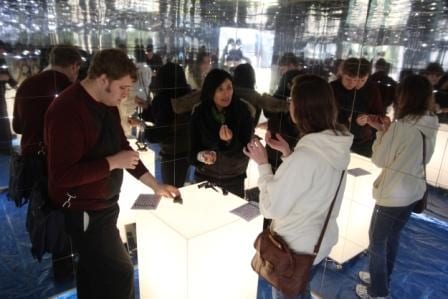Should or should not museums be places for debate?
By Celine West, on 5 April 2013
Last week the Museums Association (MA) published the results of its survey of public attitudes to museums. This survey showed all the good news that museum people love to hear – lots of people love museums, our collections, exhibitions and education programmes. As the report says, people have a strong, positive emotional attachment to museums – interestingly, whether they visit or not (1).
A summary of the report lists museums’ essential purposes (as viewed by the public), priority purposes, on down through low priority purposes. For example, an essential purpose is “creating knowledge for, and about, society” and a priority purpose is “promote happiness and wellbeing”. This list of purposes ends, however, with a couple of things under the heading “purposes challenged by the public” i.e. “what people think museums should Not be doing” and one of these is “providing a forum for debate”.
Now just a few days before the MA newsletter announcing this arrived in my inbox, I was at the Grant Museum celebrating with colleagues from UCL, and from two Glasgow institutions and from Tyne and Wear Museums, the publication of a special journal that we all contributed papers to. The theme of this latest edition of Museum Management and Curatorship is conflict and museums’ many roles in handling and discussing it, facing and embracing it.
This, dare I say excellent, publication includes heartfelt analysis and discussion of professionals’ experiences in working with conflicting viewpoints in projects such as an exhibition exploring race and archaeology, heredity and eugenics at the Petrie Museum; one of Glasgow’s Gallery of Modern Art social justice programmes; and my own outreach pod, The thing is… In all of the work reported in the journal, museum professionals are experimenting with ways that we can facilitate debate, give people space to consider and reframe their thoughts about a multiplicity of issues, and considering how this can enhance people’s lives. We are advocating museums as places where “space is found and defended for reflective debate” (2).
So how do I square this with the news I just got from the MA that this isn’t what the public want? My thinking is still pretty muddy about it, but what I’m thinking right now is, how do people know this isn’t what museums should be doing, when most museums they’ve visited aren’t doing it, or probably if they are doing it then they’re doing it in small, specific projects that are just not well-known? And just because it’s something people have said isn’t what they want, shouldn’t we persist in developing practice anyway as we all know that sometimes it’s a case in life of what you need being more important than what you want (like eating spinach not ice cream). Or as Maurice Davies, Head of Policy at the MA puts it far more eloquently, “The sector is always going to be ahead of public perception.”
There is a blog associated with the MMC publication projects http://objectsinconflict.wordpress.com/
Notes (1) The report is “Public perceptions of – and attitudes to – the purposes of museums in society” A report prepared by BritainThinks for Museums Association march 2013
(2) Tristram Besterman quoted by Bernadette Lynch in her introduction to Museum Management and Curatorship Volume 28 No.1 February 2013
 Close
Close


